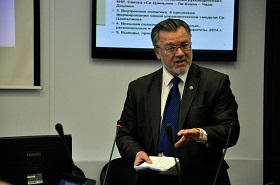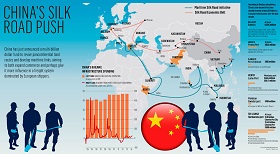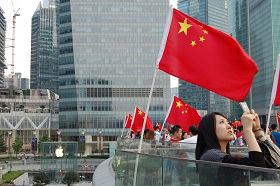China's concept of the Great Silk Road has recently been attracting a great deal of international attention, particularly in Russia since last year seems to have been pivotal in the bilateral relationship. What role does the Great Silk Road play in Russia-China relations? What resources has Beijing directed toward the full-scale implementation of this project? What reaction can we expect from other countries? These are some of the questions we put to Sergey Luzyanin.
China's concept of the Great Silk Road has recently been attracting a great deal of international attention, particularly in Russia since last year seems to have been pivotal in the bilateral relationship. What role does the Great Silk Road play in Russia-China relations? What resources has Beijing directed toward the full-scale implementation of this project? What reaction can we expect from other countries? These are some of the questions we put to Sergey Luzyanin, PhD in History, Deputy Director of RAS Institute for Far Eastern Studies, Director of the Center for Strategic Problems of Northeast Asia and the SCO, and Professor of Oriental Studies Chair at MGIMO University.
The concept of the Great Silk Road economic beltway, proposed by President Xi Jinping in 2013, implies that in terms of economy and integration, China regards Central Asia within a much broader framework than other regional actors – as the megaproject envisages the joint advancement of 21 states stretching from East Asia to Europe. Beijing takes the role of both the key architect and main driving force behind this grand plan, which involves developing economies, transportation and infrastructure projects across Eurasia under Chinese leadership – rather than building a free trade area.
At first, Russia and other countries of the then Customs Union were quite wary of Xi's idea, with some Russian exporters lamenting that the project was a Chinese response the Shanghai Cooperation Organization’s (SCO) sluggishness, and saying that the Silk Road was a path to a faster ascent for Central Asia and neighboring regions.
Today the situation appears much more optimistic. Xi's plan is definitely ambitious and long-term, reflecting the speed and specifics of China's geopolitical rise as an emerging superpower. The continental portion of the Great Silk Road – which also boasts a maritime section – clearly corresponds to Beijing's goals in Eurasia. On the other hand, the project is clearly not intended to undermine the SCO, where Russia and China are the main players, or the Eurasian Economic Union (EEU), established January 2015. Besides, both the continental and the maritime paths still only exist on paper and have not yet been institutionalized in contrast to the SCO and the EEU.
In view of projected scale, future investments and other parameters, China's plan surpasses these two projects across the board. However, they are de facto and de jure underway, despite certain technical hurdles, and already bring dividends, while the Chinese plan remains more of a mammoth debate involving experts and politicians who have been examining its details at all levels and have held hundreds of conferences in China and elsewhere in the search of an optimal arrangement.
As of now, the Chinese blueprint is hardly designed for integration – a challenging goal for 21 states. Besides, China is actively integrating through other avenues, having built about 20 FTAs in various formats. Therefore, the Great Silk Road should focus on infrastructure and transportation, as well as on socio-economic development of partner states through investment and trade, including commodity credits and other types of loans. Since huge financial resources are required, many pundits wonder why China is pushing ahead in these troubled times, when it is switching over from extensive to intensive reforms, and with GDP growing at just 7.6 percent last year. Beijing seems to count both on future economic benefits and geopolitical gains in the hope of using Eurasia as a growth base for a future Eurasian great power that could afford such a grand scheme. The project has Xi’s blessing, and he continues to enjoy huge popular support and trust. In fact, the Great Silk Road represents an attempt to realize the Chinese Dream – widely promoted both domestically and internationally.
Russia is far from being a bystander in both bilateral and multilateral relationships with China. Since Beijing is advancing the project most energetically, Moscow should be interested in using the SCO platform to outline the different forms, approaches and scenarios for its correlation with the Shanghai Cooperation Organization. Russia's interests may also be clearly seen in the SCO-EEU-Silk Road triangle, which may suggest a number of options, among them (a) integration/rapprochement along the northern route, i.e. SCO-Silk Road including strengthening of the Eurasian Development Bank at the Chinese expense, and (b) the southern route, i.e. the SCO-Silk Road that may still take shape in the more distant future, and seems less feasible. However, the three projects may well go ahead independently.
Interviewer: Maria Gurova, RIAC Program Assistant






